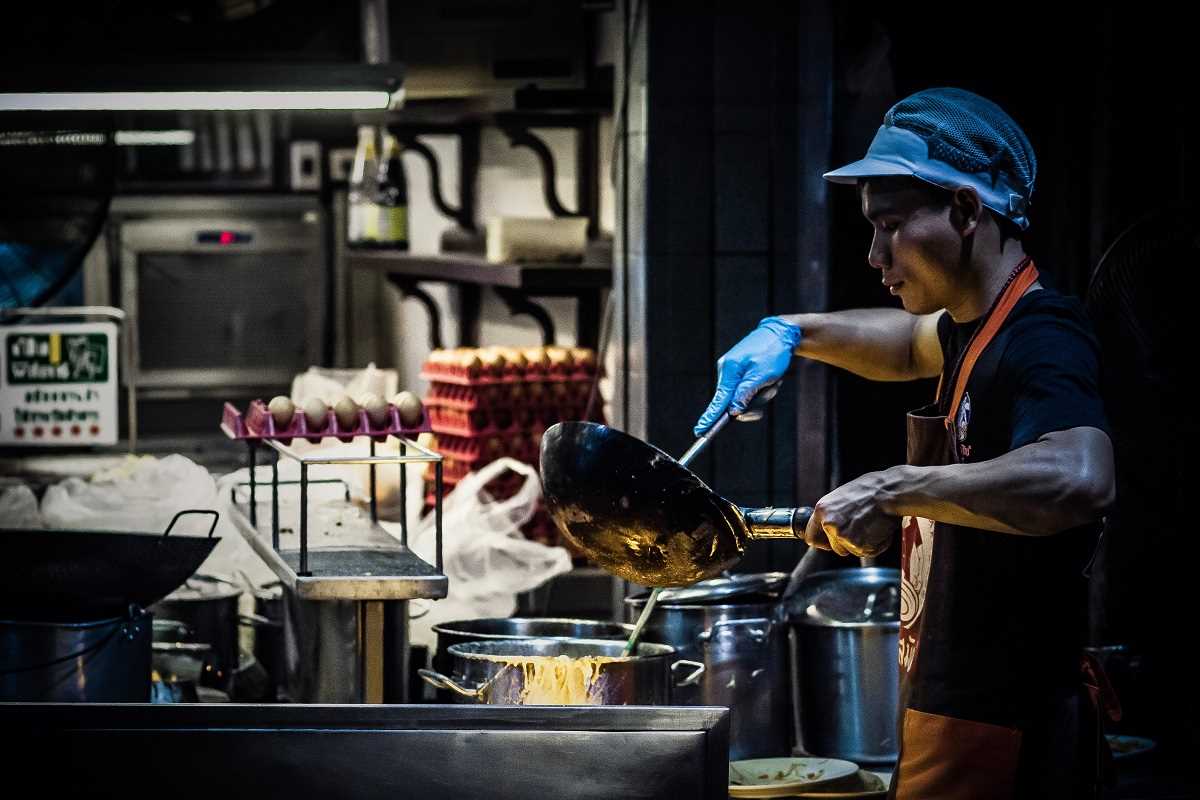Street food embodies the soul of a city—its flavors and aromas wafting through bustling alleys and vibrant markets. It’s a universal language of culinary creativity and convenience, offering an authentic slice of local culture. From sizzling woks in Bangkok to crowded taquerias in Mexico City, street food not only reflects the heartbeat of local life but also captures centuries of tradition, innovation, and community. Here’s a global tour of the world’s most iconic street foods and the cities that breathe life into them.
1. Tacos — Mexico City, Mexico
Few foods are as synonymous with a culture as tacos are with Mexico. Mexico City, the country’s sprawling capital, is a paradise for taco lovers, with countless street vendors perfecting this beloved dish. Tacos take on many forms here; the variety poses delicious challenges for anyone eager to sample them all.
Start with tacos al pastor, perhaps the most iconic of them all. Inspired by Lebanese immigrants in the mid-20th century, this dish features pork marinated with spices and pineapple, cooked on a vertical spit, and served in soft corn tortillas. The charred pork and tangy sweetness of pineapple make this a crowd favorite. Head to El Huequito, a legendary spot in Centro Histórico, for some of the best tacos al pastor in town.
But Mexico City’s taco scene doesn’t end with al pastor. Seek out tacos de carnitas with tender, slow-cooked pork, or tacos de suadero, featuring beef brisket with a rich, flavorful bite. For a late-night experience, wander street markets like El Mercado de Medellín or make your way to Los Cocuyos for melt-in-your-mouth meat tacos prepared on giant bubbling pans known as cazuelas.
Tacos show the diversity and vibrancy of Mexican cuisine. They are bite-sized packages of history and creativity, celebrated in a city that feels like its own universe.
2. Pad Thai — Bangkok, Thailand
When it comes to street food, Bangkok reigns supreme, and pad thai is its most famous offering. This stir-fried noodle dish combines chewy rice noodles with tamarind paste, fish sauce, egg, tofu, shrimp or chicken, and a sprinkling of peanuts. It’s a perfect harmony of flavors—sweet, salty, tangy, and nutty, finished with a squeeze of lime.
Bangkok’s streets are a pad thai wonderland, with countless vendors offering their interpretations of the dish. Thip Samai Pad Thai, known as "the ghost gate pad thai," is widely regarded as the gold standard. Established in 1966, this bustling eatery is famed for its fiery charcoal-cooked noodles and its special ingredient—mantis shrimp.
Other must-visit spots in Bangkok include Pad Thai Ekkamai, where the noodles are cooked to order over high heat, guaranteeing a smoky, wok-seared aroma. Wander the famous Yaowarat Road in Chinatown or Chatuchak Weekend Market, and you’ll find more pad thai stalls, each adding its own regional spin to the dish.
Pad thai goes beyond taste—this dish encapsulates Thailand’s ability to balance diverse flavors while staying deeply rooted in simplicity and tradition.
3. Falafel — Cairo, Egypt
Make your way to the bustling streets of Cairo, and you’re likely to encounter falafel, a staple of Egyptian street food culture. Unlike the chickpea-based falafel common elsewhere in the Middle East, Egypt’s version is crafted from fava beans, giving it a softer texture and a slightly nuttier flavor. These golden patties are seasoned with cilantro, parsley, onions, and garlic before being deep-fried to crispy perfection.
Cairo’s falafel culture thrives in humble street stalls and small eateries. Locals swear by Felfela, a beloved institution that has been serving up dense, herb-filled falafel sandwiches since 1959. Order your falafel wrapped in soft bread and garnished with tahini, pickled vegetables, and fresh greens for a truly satisfying experience.
During breakfast hours, you’ll find falafel rubbing shoulders with taameya, a fava bean variation seasoned with extra herbs and served with crusty Egyptian bread. Spots like Zooba, a trendy street food chain, are putting modern twists on both dishes, merging tradition with innovation.
For Egyptians, falafel isn’t just a street snack—it’s a beloved comfort food that bridges economic divides and replenishes the spirit of Cairo’s unstoppable urban sprawl.
4. Banh Mi — Ho Chi Minh City, Vietnam
Ho Chi Minh City, or Saigon, is where the classic Vietnamese banh mi had its beginnings. This sandwich marries French and Vietnamese culinary traditions, born out of colonial-era influence and local ingenuity.
A typical banh mi starts with a crispy baguette filled with an explosion of flavors and textures. Inside, you’ll find savory proteins like pork belly, grilled chicken, or pâté, paired with pickled carrots, daikon, fresh cucumber, cilantro, and a spicy chili sauce kick.
Some of the best banh mi in the city can be found at Banh Mi Huynh Hoa, where the sandwiches are piled high with layers of pork, head cheese, and creamy mayonnaise slathered onto warm bread. For a smaller, family-operated vibe, try Banh Mi Hong Hoa, which has perfected its sandwich balance over decades.
Banh mi represents Vietnam’s talent for taking global influences and making them uniquely their own. It’s a flavorful symbol of resilience and creativity served in every bite.
5. Takoyaki — Osaka, Japan
Dubbed "Japan’s kitchen," Osaka boasts an impressive street food culture, and takoyaki is its shining star. Meaning "octopus balls," takoyaki are bite-sized spheres of batter cooked in special round molds, filled with minced octopus, scallions, and pickled ginger. They’re served piping hot, topped with sweet takoyaki sauce, mayo, bonito flakes, and nori seaweed.
To experience Osaka’s takoyaki at its best, head to the lively Dotonbori district, lined with stalls emitting tantalizing aromas. Aiduya, which claims to have invented takoyaki in the 1930s, is a must-visit for a taste of history. Meanwhile, Kukuru is celebrated for using fresh, tender octopus and perfectly crisp outsides that lead to creamy, molten centers.
Takoyaki embodies Osaka’s love for communal dining, fast food that feels indulgent and social all at once. It’s not just food—it’s fun in edible form.
6. Ceviche — Lima, Peru
Cold, tangy, and refreshing, ceviche is Peru’s culinary crown jewel and an essential part of Lima’s street food scene. This dish features fresh raw fish or seafood marinated in lime juice and spiked with chili, red onion, and cilantro. The acid in the lime "cooks" the fish, creating a vibrant, citrusy dish bursting with flavor.
Every Lima neighborhood has its favorite street vendors and small cevicherias, but foodies often recommend El Ceviche de Ronald, a bustling no-frills stall serving some of the freshest ceviche in town. Pair your ceviche with cancha, crispy Andean corn kernels, for the ultimate experience.
Ceviche not only satisfies your taste buds but also introduces you to Peru’s coastal influences and its respect for the ocean’s bounty. It represents a lighter yet deeply flavorful approach to satisfying hunger in a city by the sea.
Final Reflections
Street food thrives in the space where culture, creativity, and community intersect. Whether you’re savoring a taco in Mexico City or nibbling on takoyaki in Osaka, these dishes tell the story of their cities, their people, and their heritage.
Street food is more than a meal—it’s a sensory experience, an act of discovery that allows us to connect to the beating heart of a place. Each city and dish mentioned here offers a passport not just to flavor but also to the lives and traditions of the people who create them.
The next time you travel, skip the fancy restaurants. Follow the sounds of sizzling pans, the hum of a crowded marketplace, and the mouthwatering smells wafting through the air. You’ll discover that the soul of a city often lies not in its landmarks, but in its streets—and on its plates.
 (Image via
(Image via





.jpg)